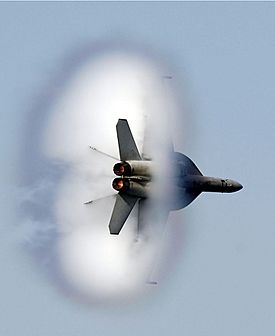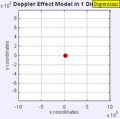Supersonic facts for kids
The term supersonic is used to describe a speed that is over the speed of sound (Mach 1). At a normal temperature like 70 degrees Fahrenheit (21.1 °C), the speed needed for something to be traveling at a faster than sound speed is about 344 m/s, 1,129 ft/s, 770 mph or 1,238 km/h. Speeds faster than 5 times the speed of sound are sometimes called hypersonic. Speeds where only some parts of the air around an object (like the propeller) reach supersonic speeds are called transonic (normally somewhere between Mach 0.8 and Mach 1.2).
Whips have operated supersonically for many centuries. Artillery became supersonic in the 19th century.
It can be very hard to reach supersonic speeds, because drag increases a lot near these speeds. This slows a plane, and for years made control difficult. These problems were called the "sound barrier". Jet engines and other developments solved the problems in the middle 20th century.
Images for kids
-
British Airways Concorde in early BA livery at London-Heathrow Airport, in the early 1980s
-
The sound source has now broken through the sound speed barrier, and is traveling at 1.4 times the speed of sound, c (Mach 1.4). Because the source is moving faster than the sound waves it creates, it actually leads the advancing wavefront. The sound source will pass by a stationary observer before the observer actually hears the sound it creates.
See also
 In Spanish: Velocidad supersónica para niños
In Spanish: Velocidad supersónica para niños




